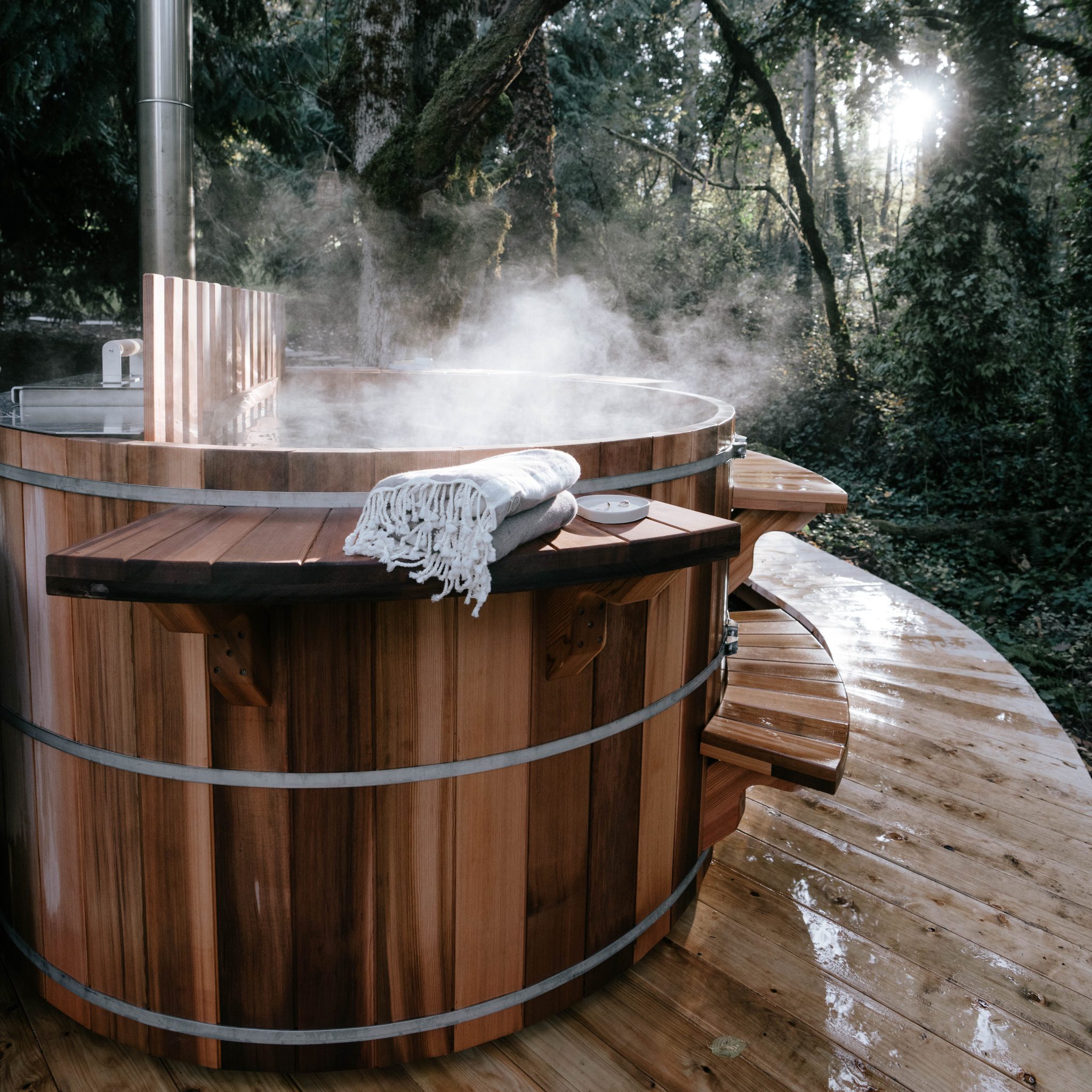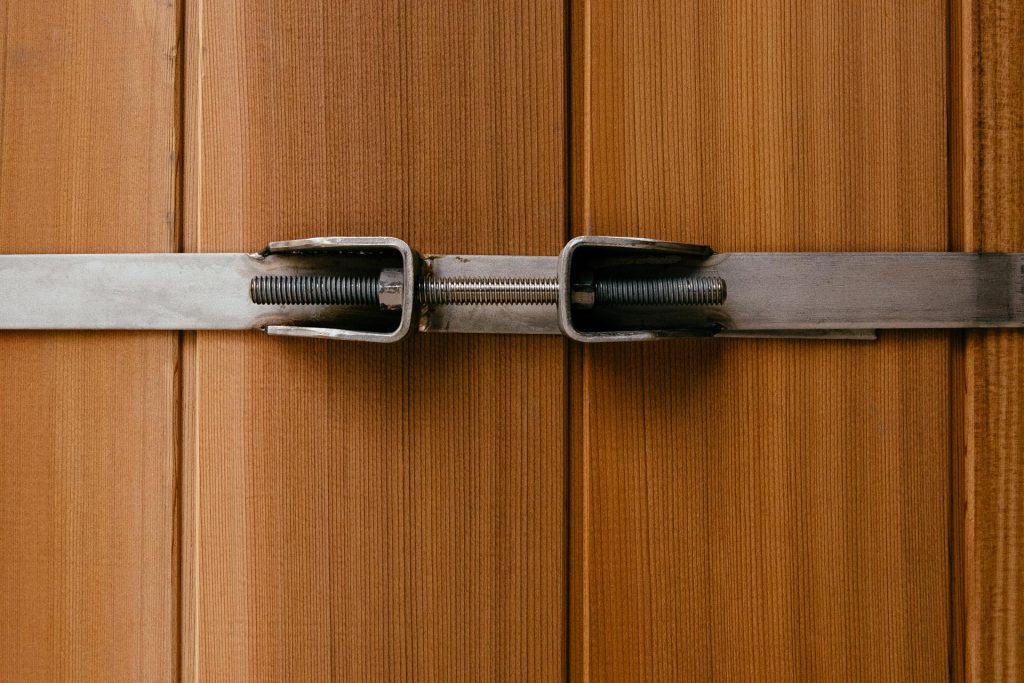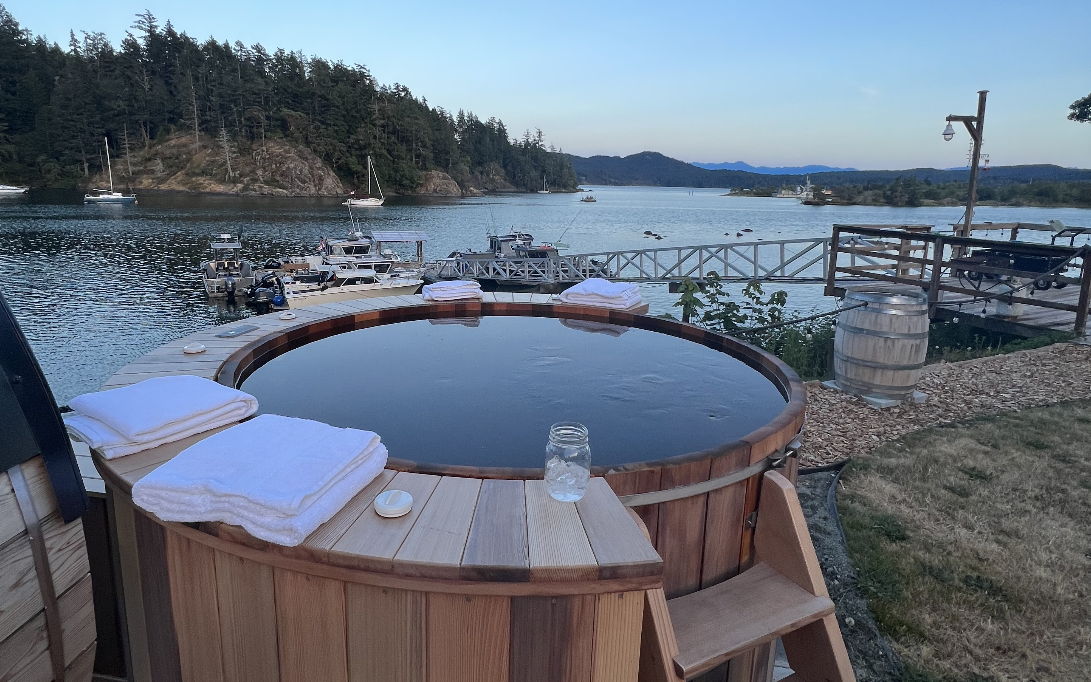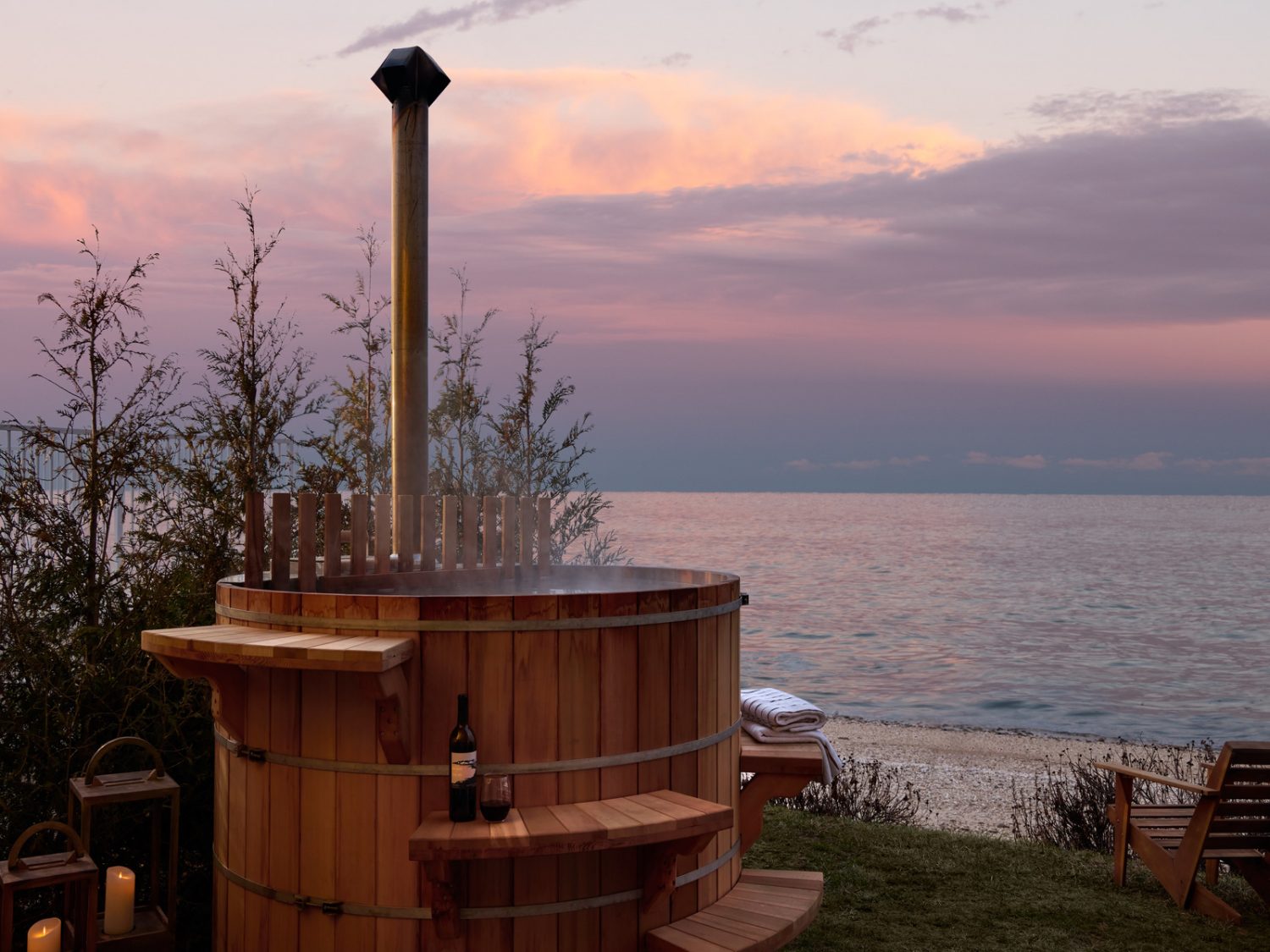When buying a new hot tub a question that’s bound to be top of mind is how much life you’ll get out of it. You might be surprised to learn that a high-quality cedar hot tub can be expected to last at least as long but typically much longer than your average plastic hot tub. Of course, not all wooden tubs are created equal. The lifespan of a wood hot tub depends on the type of tree from which it is made, the quality of the wood and construction, the environment it lives in and how well it’s maintained.
So how do you know what to expect? Let’s dig into it.


The Lifespan of a Cedar Hot Tub
Let’s cut to the chase, how long can you expect your wood hot tub to last?
Forest Cooperage has been making cedar barrel hot tubs since the 1990s. We’ve heard from customers whose tubs have lasted 15-30+ years and we estimate the average lifespan of our cedar hot tubs to be 20 years or more.
Just because a hot tub is made of cedar doesn’t mean it will last this long. There are many grades of cedar wood that have dramatically different life expectancies. On top of that, how and where your hot tub is built, and how you maintain it over its lifetime will determine how long it will last.
Do Wood Hot Tubs Last Longer than Plastic?
Would you have guessed that a cedar hot tub can be expected to outlast a traditional acrylic tub? Wood is a natural material that can decay over time, while plastic can last virtually forever, right?
The average plastic hot tub can be expected to last 10-15 years, with the predicted range to be anywhere from 5 years for a low-quality option up to 20 years for a top-quality hot tub that’s well maintained.
In addition to the predicted functional lifespan, an important consideration is end-of-life disposal.
Again wood hot tubs are the clear winner here. Untreated wood hot tubs can be dismantled and composted back into the earth, or repurposed as firewood or non-structural building materials. Meanwhile, plastic hot tubs can be quite costly to dispose of in the landfill, not to mention the environmental impacts.
A final consideration is aesthetics. You probably don’t want to get stuck with a tub that will look worn out or dated after the first 5 years. With a clean design based on a centuries-old construction technique, you can be sure that a cedar barrel hot tub won’t go out of style any time soon.


What is the Best Wood for a Hot Tub?
Cedar is the wood of choice for barrel hot tubs due to its natural resistance to decay. Western red cedar trees contain natural chemical extractives that make the wood incredibly decay-resistant and lend that distinct aroma.
At Forest Cooperage, we’re particular about the wood we use because we want our customers to enjoy our products for decades. For the best longevity, we choose Western Red Cedar that ticks all these boxes:
- Vertical grain (stable and won’t warp)
- 100% heartwood (the strongest and most rot-resistant part of the log)
- Slow-grown (tight growth rings)
- Clear (free from knots)
What does this mean exactly? Glad you asked.
Some wood hot tubs are offered with flat grain which is less stable and can lead to slivers in the wood as the grain lifts–not ideal when your skin is up against it! These hot tubs tend to have a shorter lifespan, which is why we make all of our hot tubs and soaker tubs from vertical grain, or edge grain as it is also known.
Trees grown in plentiful light will have less of those wonderful smelling, rot-resistant extractives, wider annual growth rings and a large proportion of sapwood, making the wood much less durable.
We use wood that contains only heartwood because it’s much stronger and longer lasting than wood that is milled to include the outer layers of the log. Sapwood is the white wood under the bark that conducts the water up and down the tree; the sapwood is where the tree does its growing. As a tree grows, sapwood eventually turns to heartwood, which supports the tree, giving the wood its strength.
Sapwood does not have decay-resistant properties and should not be used in products that will be exposed to the elements. While it is more economical to use lumber that includes some sapwood, the lifespan of sapwood in cedar is only about seven years at best, which would drastically reduce the lifespan of a hot tub.
Clear cedar contains virtually no knots, meaning you won’t see any rustic dark spots where the branches were growing. Not only does this provide a beautifully clean aesthetic, but it also makes an impact on longevity. Clear cedar is more stable and less prone to rot and insect damage than knotty cedar.


How to Extend the Life of Your Wood Hot Tub
Once you’ve decided to buy a high-quality cedar hot tub, you’ll want to treat it with the care it deserves. Wood hot tubs don’t require an overwhelming amount of maintenance, but following a few best practices will help you get the most out of your investment.
The integrity of your wood hot tub starts with its foundation. Avoid placing your tub on a soft, wet or muddy surface, all of which can lead to damage. By building a solid foundation for your tub and choosing a location that will allow water to drain away from it, you can avoid rot and protect the wood from warping over time.
Draining and cleaning your hot tub regularly helps to remove dirt, oils and organic matter which can all contribute to wear and tear. When washing your tub, use a mild soap and a soft-bristle brush, scrubbing gently in the direction of the grain to avoid damaging the wood.
Another important consideration is the chemicals you use to sanitize your hot tub. Keeping the water clean with chemicals like bromine or chlorine is crucial for both hygiene and the longevity of the tub itself, but when used in excess, these chemicals can cause the wood to become pulpy and damaged. Overuse is the number one way to end up with a leaky or damaged tub
To ensure your cedar hot tub remains in good condition, it’s important to use sanitizing chemicals in moderation and to regularly test and adjust the levels as needed. Water sanitizing supplements like mineral ionizers or UV systems can assist in lowering the required amount of chemicals, which is gentler on the wood and on your skin.
Finally, if you live in a freezing climate, it’s essential to winterize your tub, whether you plan to use it throughout the winter or drain it until the weather warms up. Think back to your high school science class… water expands when frozen! While a well-built tub may survive a freeze, it’s best not to take your chances.
How to Protect the Exterior of Your Tub
Giving the exterior a periodic cleaning and keeping organic material including dirt away from the tub will prolong its life. It’s also important to ensure air can flow around the sides.
While you might be tempted to wrap the tub in insulation, or otherwise put things up against the tub, this is likely to lead to premature rot. What you save in heating, you lose in longevity. As with many things in life, there are tradeoffs; we err on the side of protecting the wood.
A skirting package is a great option to increase the efficiency of an above-ground hot tub. It creates an air pocket around much of the tub that will help to insulate it, while still allowing air to flow around the tub. If you’re concerned about efficiency (as we all should be!), it will also help to protect your tub from prevailing winds. Wind is your enemy when it comes to preserving heat in a hot tub. A windscreen like a hedge, plantings or a fence will make your cedar hot tub more efficient, with the added benefit of providing privacy.
Many clients opt to leave their cedar tubs in their natural state–not stained. If you choose this option, you’ll have less maintenance to worry about, and over time UV from the sun will give the exterior a nice silver patina. The silvering of the wood is only at the surface, and if you sand the top layer off, you will find fresh-looking wood underneath.
As an alternative, staining can be a good option to maintain the natural colour of the wood and help keep algae from growing on the wood. If you choose to stain your tub, opt for a waterborne stain, which will have a UV inhibitor to slow the process of silvering. Keep in mind that you will need to stain the tub every few years to keep up the appearance. UV Protection Oil from Osmo contains a biocide that will help resist the growth of algae on the cedar.
How To Choose a Long-Lasting Wood Hot Tub
As you can tell by now, there is a huge range in the predicted lifespan of wood hot tubs. Cedar hot tubs can certainly last longer than plastic, but this depends largely on the quality of the wood. It’s also important to keep up with your maintenance routine to ensure your tub doesn’t start to wear out prematurely.
If you have questions about how to care for our cedar barrel hot tubs please get in touch! Our team is available to walk you through your options and help you choose the best tub for your location and lifestyle.


